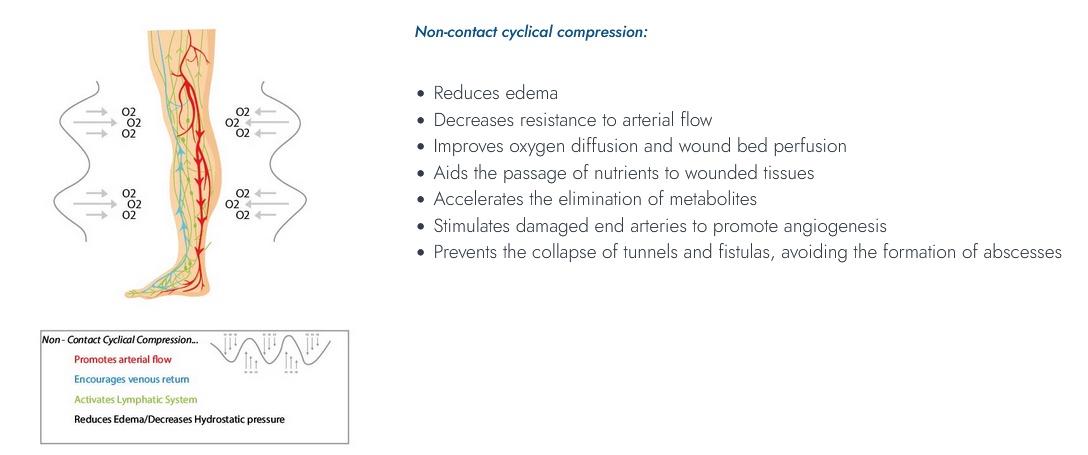Wound care management is critical to healthcare, especially for individuals suffering from chronic ulcers and other stubborn wounds. Over the years, various methodologies have been explored to expedite healing and mitigate complications associated with non-healing wounds. Among these, Advanced Oxygen Therapy Inc. has emerged as a promising solution, offering new avenues for wound care treatment.
Chronic wounds often result from underlying conditions such as diabetes, vascular diseases, or prolonged pressure on specific body parts. Traditional wound care approaches involve debridement, dressings, and antibiotics. However, in cases where conventional methods fall short, alternative therapies like topical hyperbaric oxygen therapy come into play.
Topical hyperbaric oxygen therapy involves the application of oxygen at elevated pressures directly to the wound site. This delivery of oxygen under pressure enhances the oxygenation of tissues, stimulating cellular activities crucial for wound healing. Unlike systemic hyperbaric oxygen therapy (HBOT), which involves inhaling 100% oxygen in a pressurized chamber, it delivers oxygen locally, targeting the wound bed directly.
Wound care ulcer: A topical hyperbaric oxygen therapy option in wound healing process
One of the primary mechanisms through which topical hyperbaric oxygen therapy facilitates wound healing is by combating hypoxia, a condition commonly observed in wound care ulcer. Hypoxia, or insufficient oxygen supply to tissues, hampers the cellular processes necessary for wound repair. By delivering oxygen directly to the wound site, it alleviates hypoxia, thereby promoting angiogenesis, collagen synthesis, and fibroblast proliferation—critical processes in wound healing.
Additionally, it exhibits antimicrobial properties, aiding in the eradication of pathogens present in the wound environment. Many chronic wounds are prone to infections, which can impede healing and lead to severe complications. The bactericidal effect of oxygen under pressure helps reduce microbial load, creating a more conducive environment for healing.
The application of THOT is versatile, with various delivery methods available depending on the nature and location of the wound. It can be administered through specialized chambers, dressings, or a mist sprayed directly onto the wound bed. This flexibility makes it suitable for a wide range of wound types and patient populations.
In recent years, research into topical hyperbaric oxygen therapy has yielded promising results, with studies demonstrating its efficacy in accelerating wound care solutions and reducing the need for more invasive interventions. Clinical trials have shown significant improvements in wound size reduction, closure rates, and patient outcomes following THOT interventions.
Oxygen therapy has yielded promising results wound care solutions.
Moreover, THOT is relatively safe and well-tolerated, with minimal adverse effects reported. Unlike systemic HBOT, which carries risks such as barotrauma and oxygen toxicity, it delivers oxygen locally at lower pressures, minimizing the likelihood of complications.
Despite its potential benefits, the widespread adoption of THOT in clinical practice faces particular challenges. Limited availability of specialized equipment, lack of standardized protocols, and reimbursement issues hinder its integration into mainstream wound care regimens. Additionally, further research is needed to optimize treatment protocols, identify patient selection criteria, and elucidate the long-term effects of this therapy on wound healing outcomes.
In the realm of wound care solutions, this therapy represents a promising frontier, offering a non-invasive, targeted approach to wound healing. Its ability to address the underlying path physiological processes involved in chronic wound formation makes it a valuable addition to the armamentarium of healthcare providers.
Moving forward, the efforts of Advanced Oxygen Therapy Inc. is directed toward expanding access to this therapy, refining treatment protocols, and raising awareness among healthcare professionals about its potential applications. Collaborative research initiatives involving clinicians, researchers, and industry stakeholders are essential for advancing our understanding of oxygen wound therapy and maximizing its therapeutic benefits in wound care management.
In conclusion, topical hyperbaric oxygen therapy holds immense promise as a novel approach to wound care, offering a multifaceted solution to the challenges posed by chronic ulcers and non-healing wounds. By harnessing the healing power of oxygen under pressure, THOT has the potential to transform the landscape of wound care, improving outcomes and quality of life for patients worldwide.
For more information about oxygen wound therapy, switch on Advanced Oxygen Therapy Inc. for the best treatment for diabetic disease or ulcers.


No comments yet